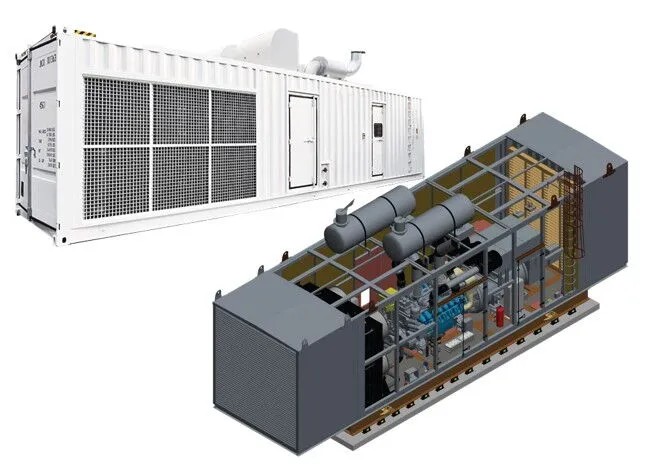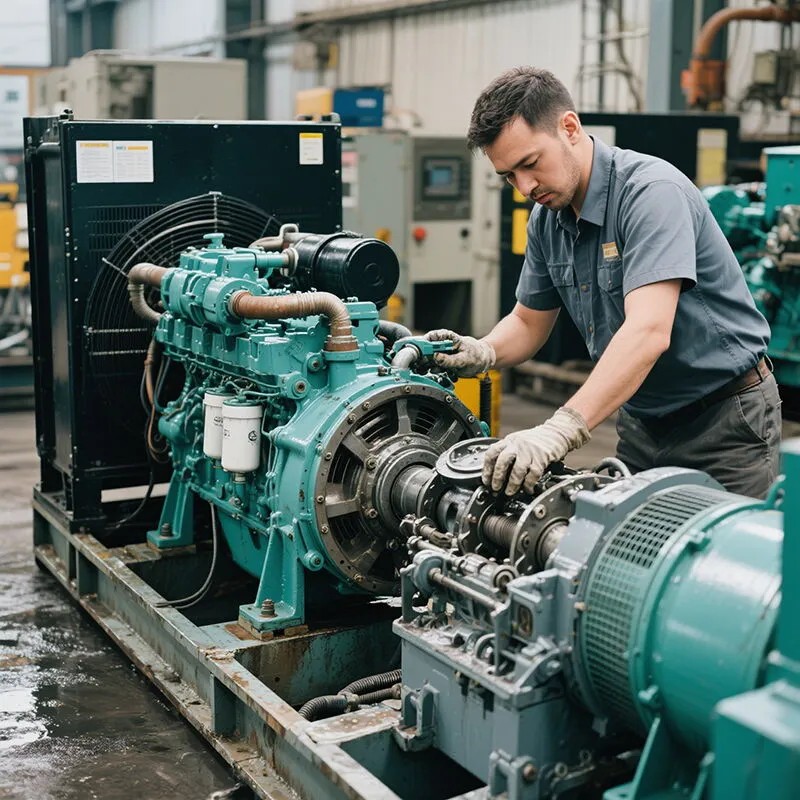How to Design a Containerized Diesel Generator Set?

Strong 8k brings an ultra-HD IPTV experience to your living room and your pocket.
Comprehensive Design Guide for Containerized Diesel Generator Sets
Containerized diesel generator sets are compact, high-efficiency, and easily transportable power systems, widely adopted in areas requiring emergency backup or temporary power—especially remote locations lacking stable grid access. As self-sufficient power solutions, these generator sets must meet diverse requirements for output, environmental conditions, configuration, and safety to ensure reliable and efficient operation across various use cases.
This guide explores key design elements of containerized diesel generator sets, including power output, interface compatibility, noise reduction, ventilation, fuel and drainage systems, protective measures, and operational space—offering practical insights for engineers and project planners.
1. Power Output and Interface Configuration
At the core of any diesel generator set is its ability to deliver stable power. Effective design must accommodate actual load demands while maintaining compatibility with surrounding systems to support scalability and ease of maintenance.
1.1 Power Output Requirements
Containerized generator sets typically combine high-efficiency diesel engines with robust alternators, delivering outputs ranging from tens to hundreds of kilowatts. Power selection should be based on actual operational loads, considering factors such as rated power, overload capacity, and peak starting current.
To maintain performance during fluctuating loads, the control system should support automatic load adjustment. This feature ensures consistent power delivery, prevents overload, and allows the generator to respond quickly to variable demand.
1.2 Interface and System Compatibility
Effective integration with external systems requires well-defined electrical and control interfaces. The container should include standardized high- and low-voltage output terminals, along with control and monitoring ports to allow for system expansion or upgrades.
Compatibility with power distribution systems, automation platforms, and remote monitoring software minimizes future retrofitting costs and operational disruptions.
2. Noise Reduction and Ventilation
Diesel generators generate considerable noise, especially under load. In sensitive environments—like hospitals, residential areas, or schools—noise control is critical not only for environmental compliance but also for health and safety.
2.1 Noise Control Design
Uncontrolled noise levels can exceed 85 dB, which poses health risks over prolonged exposure. To mitigate this, containerized generators are outfitted with multi-layer composite enclosures and sound-absorbing panels such as acoustic cotton or specialized linings.
Soundproof walls and internal dampening materials reduce operational noise to 70–75 dB, aligning with most industrial and municipal regulations.
2.2 Ventilation System Design
Noise insulation must be balanced with adequate ventilation to prevent overheating. Diesel engines produce significant thermal output, and poor airflow can compromise performance and longevity.
Proper ventilation design includes strategically placed air intakes and exhausts. Airflow should be optimized to ensure consistent cooling while avoiding intake from dusty or corrosive environments.
3. Fuel Tank and Drainage Design
A reliable fuel supply is essential for autonomous operation. Most containerized sets are equipped with built-in daily fuel tanks sized for at least 8 hours of continuous use, with options to scale for extended runtime.
3.1 Fuel Tank Sizing
Tank capacity is determined by the desired runtime and expected fuel consumption. For remote or fuel-scarce locations, larger tanks are preferable to minimize the frequency of refueling and ensure operational autonomy.
3.2 Drainage and Waste Management
Over time, fuel tanks can accumulate water or impurities. A proper drainage system should be incorporated at the tank’s base to facilitate removal of contaminants. A filtration mechanism is also essential to prevent dirty fuel from entering the system.
Drainage outlets should be placed outside the container, away from sensitive components, to prevent leakage and environmental contamination.
4. Protective Measures for Harsh Environments
To ensure long-term reliability, containerized diesel generators must be built to withstand diverse environmental conditions such as extreme temperatures, high humidity, or dusty winds.
4.1 Climate Adaptability
Designs should be tailored to regional climates. For humid environments, corrosion resistance and waterproofing are essential. In cold areas, internal heaters and engine pre-heating systems improve cold-start reliability.
4.2 Fire Protection
Fire safety is paramount. Containerized sets often incorporate automatic fire suppression systems using FM-200, CO₂, or other clean agents. These systems detect fires early and suppress them without water, protecting sensitive electronics. Additional safety features include fire alarms, thermal sensors, and emergency shutoff protocols.
5. Distribution System and Maintenance Accessibility
Efficient power distribution and convenient maintenance access are essential for daily operation and long-term performance.
5.1 Low-Voltage Distribution
An integrated low-voltage panel distributes generated power to external loads. It should be easily accessible and equipped with protection components such as circuit breakers, surge protectors, and overload relays to ensure system safety.
5.2 Operational Space
Space for maintenance and operation must be thoughtfully designed. Control panels, switchgear, and monitoring devices should be positioned ergonomically, with ample room for inspections, repairs, and component replacement.
6. Containerized vs. Open-Frame Diesel Generator Sets
Each generator configuration has advantages, depending on the application environment.
6.1 Containerized Generator Advantages
Compact Integration: Combines engine, alternator, controls, fuel tank, and noise reduction in one unit.
Mobility: Standardized container form factor simplifies transportation and rapid deployment.
Protection: Offers superior protection against weather, vandalism, and environmental hazards.
6.2 Open-Frame Generator Advantages
Flexibility: Easier to modify, access, and maintain, especially in dedicated generator rooms or facilities.
Lower Cost: More economical due to simpler construction without enclosures or integrated systems.
Conclusion
Containerized diesel generator sets are a modern solution for mobile, reliable, and efficient power delivery—ideal for construction sites, energy facilities, telecommunications, and disaster response. Their integrated design, combined with enhanced protection, mobility, and noise reduction, makes them suitable for complex and remote deployments.
By carefully addressing power output, interface design, noise control, ventilation, fuel management, protective measures, and operational accessibility, designers can ensure optimal performance and extend the service life of these systems. While open-frame units may offer lower costs and greater flexibility in certain environments, the containerized approach remains the preferred choice for turnkey and off-grid power needs where safety, rapid deployment, and environmental resilience are priorities.Know more about Google SEO Directory
Note: IndiBlogHub features both user-submitted and editorial content. We do not verify third-party contributions. Read our Disclaimer and Privacy Policyfor details.



